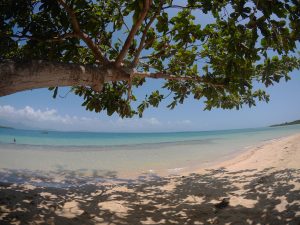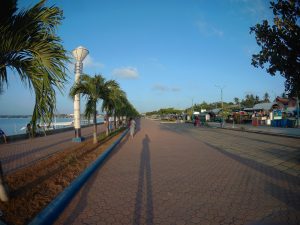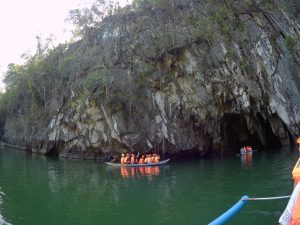Hi! It’s me again Sonny. Did you read my previous article Lights Out! Let Them Shine: Ihawig Firefly Watching, Palawan? Well, you better read it as this post somewhat appear as the continuation! (Hint: Crocodiles.) Oops! Speaking of. Here we are, let us now go explore Palawan Crocodile Farm (also called Palawan Wildlife Conservation Center)! 🙂
This post is a part of Puerto Princesa, Palawan: A Walk-through to the City of Living God article. Go back to the main article to see more of Puerto Princesa.
The Story
Today, I opened my social media account and read news (This is a part of my daily routine. Hehe). The news are all about Lolong (Once, the world’s biggest crocodile alive after captivity) was moved to National Museum of Natural History.
That time, I realized that I haven’t done anything and still yet to publish the story of Mac-Mac, one of the biggest salt water crocodile in Palawan. I have seen Mac-Mac when we’re gone to Palawan earlier this year. Well. Yes, this blog about it is quite late but surely here I am, posting the story as an updated one.
The one that also urged me to do this article is the documentary of Kara David on i-witness titled “Crocodillus”. I was shocked and felt sad to know that the family of Mac-mac is currently placed as one of critically endangered species of crocodiles in the whole world. More on this, I want to show you, where they go as our nation is geared to development and modernization.
Flashback
A few months ago, Raz and I went to Palawan for another journey of Feetpillars. Well, that’s really a good adventure because of meeting foreign friends, having quick shots of local people’s culture, and of course, seeing amazing beauty of nature and well-conserved flora and fauna. Two of the conservation we are able to go when we are in Palawan are Palawan Wildlife Rescue and Conservation Center and Butterfly Garden.
Ex-Situ Conservation
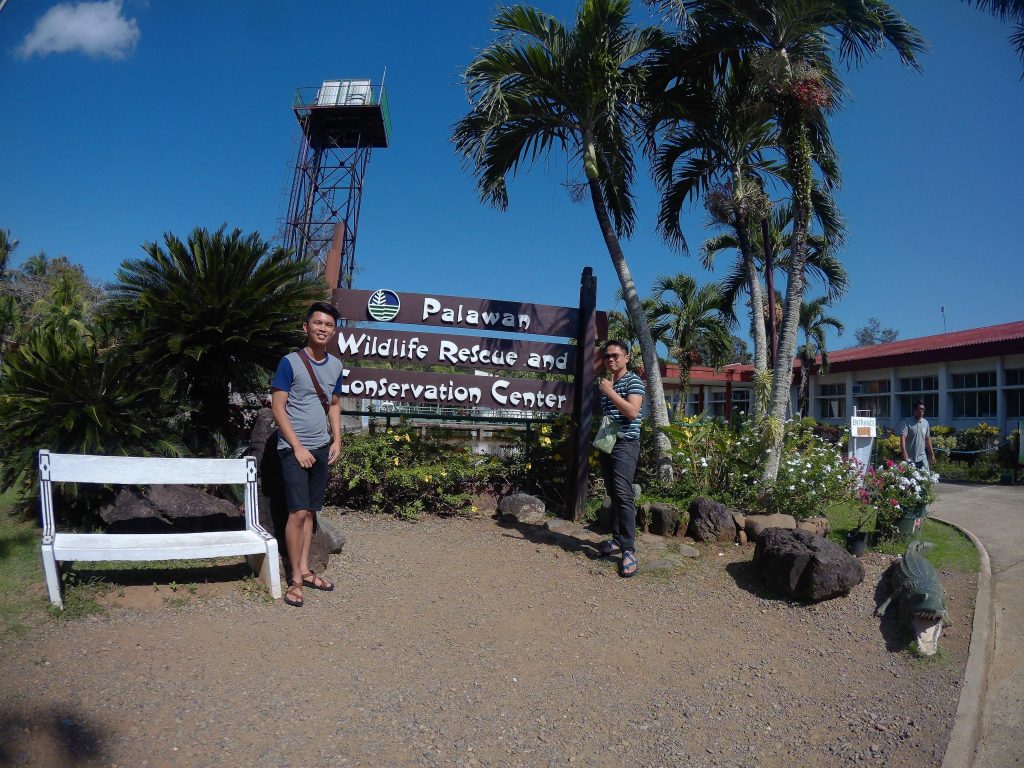
Crocodile Farming Institute or Palawan Crocodile Farm is now known as Palawan Wildlife Rescue and Conservation Center. Whatever the place will be called, one thing is for sure. It is the place where the rescued animals are placed (or captivated, depends on how you look at it). For now, mainly it serves as hatching area for endangered crocodile species. Nonetheless, many other wildlife are house inside the center.
Ex-situ in scientific term means preservation of biological diversity outside their natural habitat.
How to get there?
Crocodile Farm is well known around Puerto Princesa. You can ride from Puerto Princesa Airport to the conservation center by tricycle for around 300 pesos as round trip fare (greatly depends on your charm). Just tell the driver that you are headed to Crocodile Farm. In our case, we got ours for 500 pesos coming from downtown Palawan. This includes Butterfly Garden as well. We were told that the tour fare is controlled by Palawan’s local tourist office. But, we don’t believe it. Prepare your haggling skills.
Entrance Fee
At 40 Php you can have the tour inside the conservation center that will last for about 30 minutes to 1 hour (depends on you). The center is open from Mondays to Saturdays at 8:30– 11:30AM and 1:30PM – 4:30 PM. I believe the center is open until 5PM but the last tour is scheduled at 4:30 PM*.

*Schedule is subject to change anytime.
Start of Tour
The tours inside the center are guided. Meaning, you should wait for the next scheduled group if you missed the first one. Tours are conducted every 30 minutes though, you will have lots of slots to fill in. The guided tour will end after visiting the hatching area. You will be all by yourself exploring the mini forest behind, housing other animals.
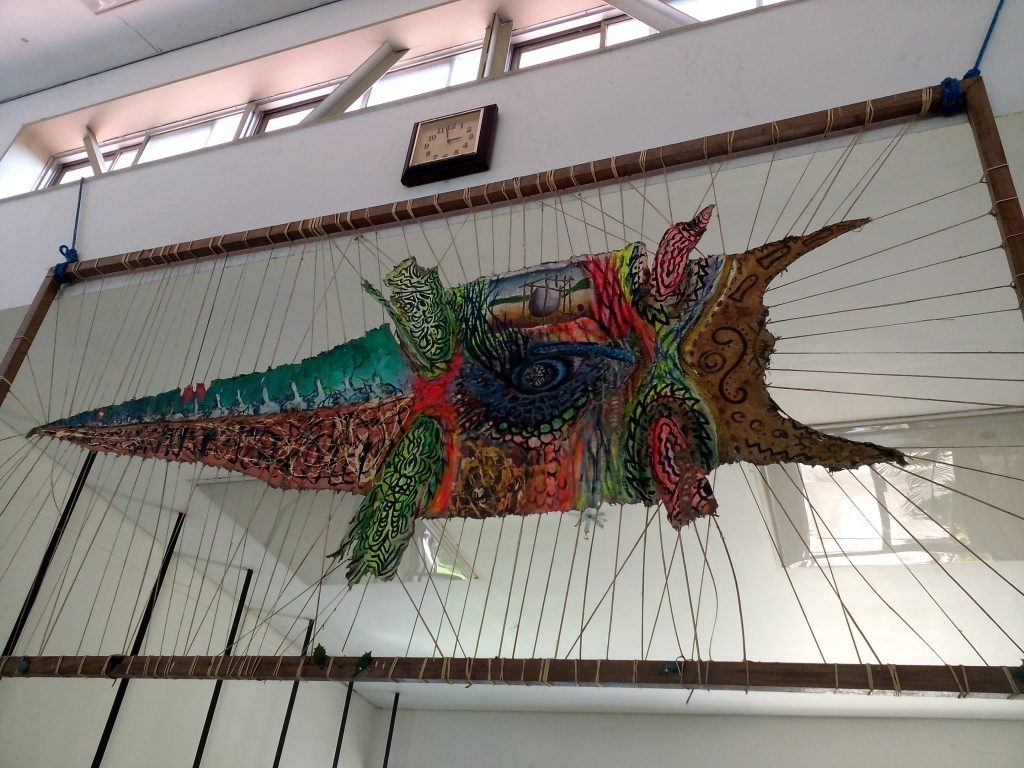
First spot, on their main lobby, there is a huge crocodile skeleton that measured more or less 17 feet who died due to stress. I’m sorry, that’s the only thing I can remember of about the skeleton. Uhmm, there is also the crocodile’s skin hanged on the wall. Take a picture with it. Just make sure you don’t take stress too much yourself, it is very dangerous!

One of the tourists in our group ask: Why is the skin not made into a bag? Answer: The skin is too thick for that usage, typically those skins used in luxury bags are those of younger crocodiles.
And, if you may ask also. No. The crocodile sisig being sold around Puerto Princesa don’t come from here. As what we are told. 🙂
Hatching Area
Have you ever imagined a crocodile taking a bath on a bathtub? Well, you can find one in here! Haha.
There are two types of crocodile here, a Crocodillus porusus, a saltwater crocodile and a Crocodillus, a fresh water crocodile.
You can know the difference of the two crocodiles by their skin. The differences, I guess I’ll just save it for the tour guide to say.
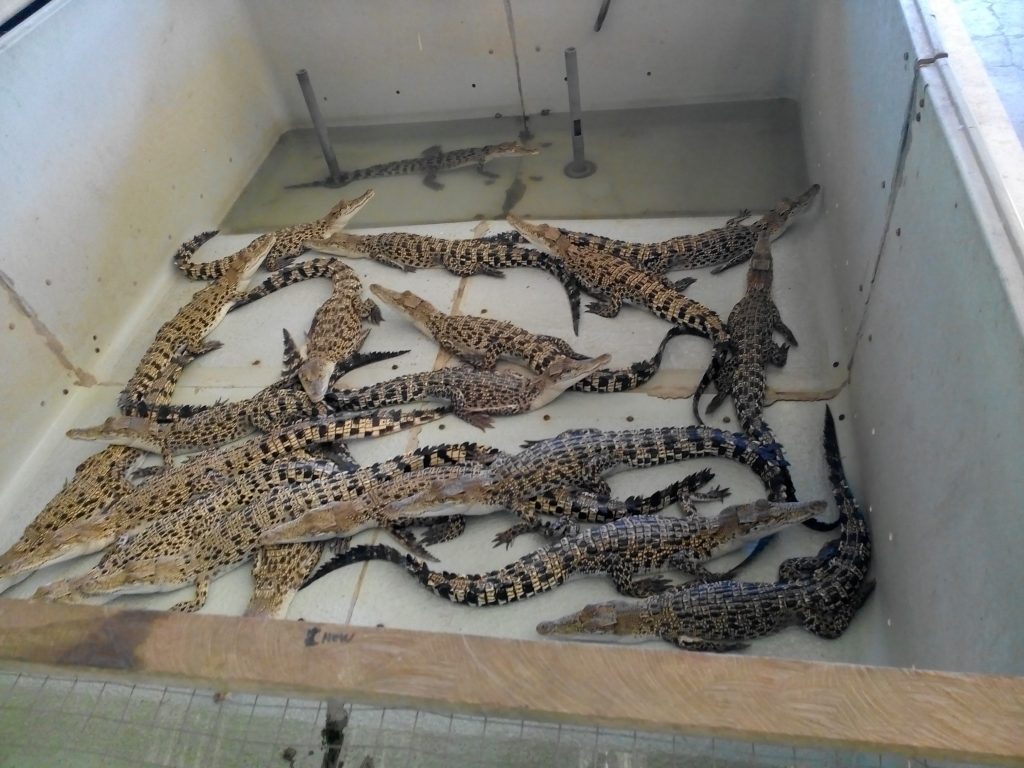
As per our tour guide, upon reaching the right age and length, these crocodiles will be set free to their natural habitat. They continue to monitor them after. As of the current day, the center already released hundreds of them. Isn’t it an amazing task where to find them in Palawan? 😀
Choose Your Company
Not only baby crocodiles are taken care of here, every pond consists of 10-15 crocodiles as per my count (Yes I do count them, oha!). But that claim will be invalid for one pond. The pond that belongs only to Mac-Mac. He is the biggest crocodile in the center and Puerto Princesa. His size is almost the same or I think bigger on the skeleton found on the lobby. So, where are you going for your company? For me, I guess I’ll stay with the baby crocodiles inside the hatching area (the bath tub is a plus!).
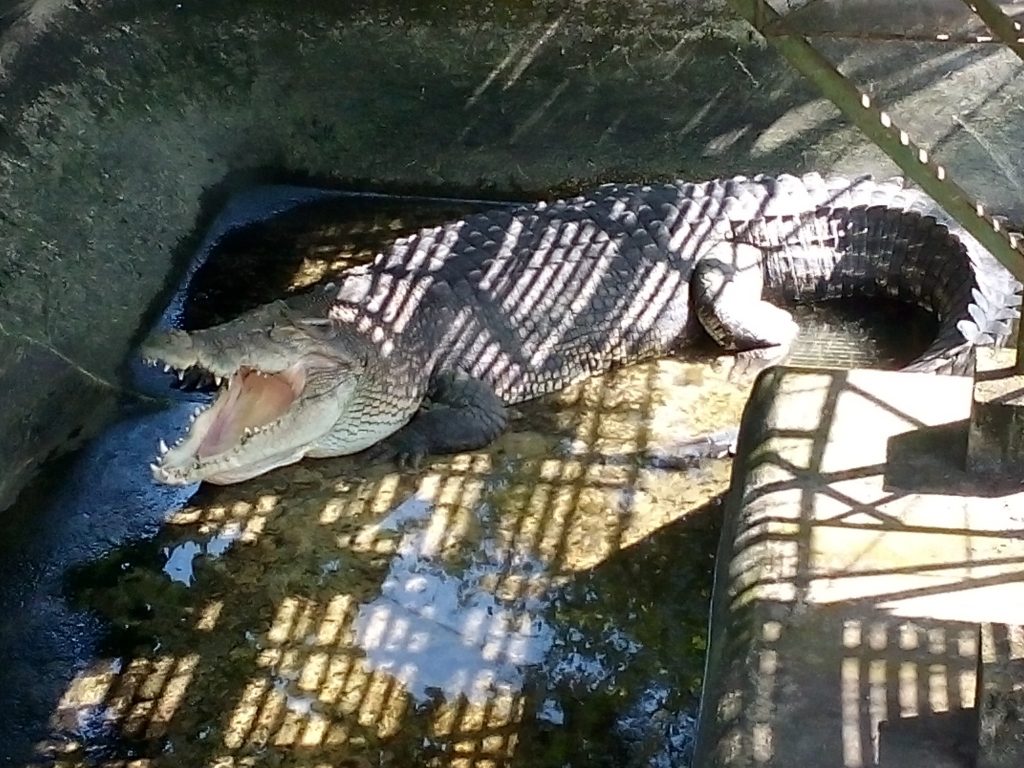
Feetpillars Adventure in Crocodile Farm
At the end of the tour, there’s a show where you can touch the crocodiles and take pictures with them. Remember, this is not a place only for the crocodiles, it’s also a place where they are taking care of some of the animals that can only be found in Palawan and in Philippines. For us, we opted not to take pictures carrying a crocodile. We just went to the mini forest and have a sight of wildlife there.
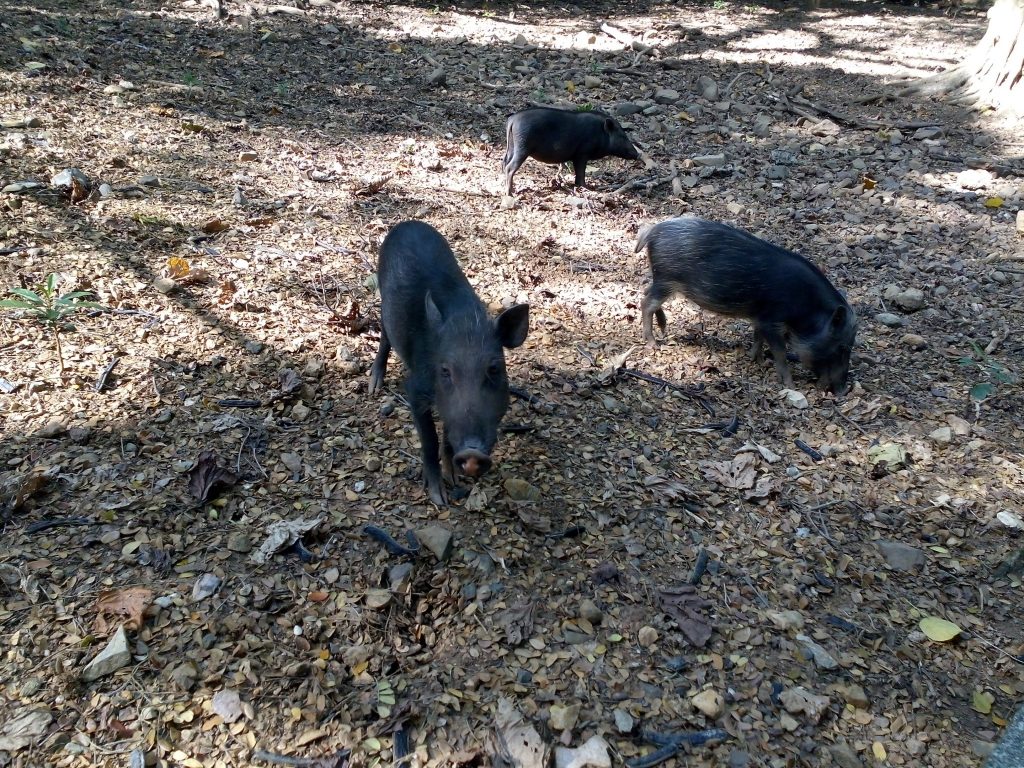
Special thanks to our friendly driver/tourist guide, Kuya Russian Evina. We can’t visit both the Palawan Butterfly Garden and Palawan Crocodile Farm without him. We recommend hiring him for your own city tour!
Russian Evina – +6390 197 1904
Right after crocodile farm, we see ourselves sitting on a van bound for Sitio Sabang. Literally, Kuya Russian drove us so fast and furiously but safely for us to catch that trip. The P500 we paid for his service is “sulit”.
Expenses Summary
Crocodile Farm Entrance Fee (40 x 2) – Php 80
Chartered Tricycle Fare/Service – P500*
Total: 580
*already included: visit to Palawan Butterfly Garden and drop-off to San Jose Terminal.
For your next reading: Crystal Waters of Honda Bay, Palawan: A Half Day Island Tour (DIY) | Beauty of Sitio Sabang, Palawan: The Gateway to Underground River
